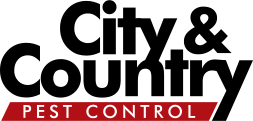Humane Removal of Bats

The area of South Western Ontario is a home to only about four species of bats which include the Big Brown Bat, the Little Brown Bat, the Hoary Bat and the Eastern Red Bat. All bats that make Canada home are insectivores, meaning their diet consists of insects. Bats are nocturnal mammals that are active during the worm months from late evenings to early mornings. They mainly feed on flying insects which include moths, wasps, beetles, gnats, mosquitoes, midges and mayflies, among other insects. A bat can eat it’s own body weight of these insects every night, making it a very useful animal for insect control indeed.
At dawn bats return to their dark roosting places where they rest and remain for the daylight hours. Places suitable for day roosing may include mines, caves, hollow trees, bat boxes (provided by people), as well as warm, dry areas such as home, or cottage attics, barns, sheds, etc. Bats are not destructive species like squirrels, or raccoons, they do not chew their way in through the roof, they do not tear up insulation, chew up on wood and cables, they do not cause structural damages. If they enter a home, or a cottage, barn, or shed, they do so using a hole created by disrepair, or by squirrels, or raccons, although bats have the ability of squeezing through very small openings, making almost every structure at risk to bat activity. The biggest reason for not wanting a bat in your home is bat guano, as bat droppings are called. The accumulation of bat feces/droppings produced by an established bat colony can increase the possibility of contracting a lung disease called histoplasmosis.
Althugh not nearly as common as raccoons and skunks, bats may transmit rabies to humans, cats, or dogs, through a bite or a scratch. Rabied bats usually lose their ability for fly, so handling a bat found on the ground that does not appear healthy should be avoided.
A lot of bats species and endangered, some are designated as species at risk, and some are even protected species. City and Country Pest Control believes in humane removal of bats from your property without killing these useful animals, or otherwise harming them.
Bats either migrate, or hybernate during the cold and winter months. Disturbing hybernating bats is not recommended as waking up from hybernation requires the bats to raise their body temperature from around 3 degrees Celcius to about 36 degrees Celcius during the time there are no insects for them to eat. This process consumes a lot of fat that bats need to survive the winter. If the fat reserves are exhausted before spring, the bats will starve to death. If possible, evicting bats should be done in April, or in late August to mid-September.
City and Control Pest Control will arrange an onsite assessment of your home or business, outlining the work necessary to resolve the ongoing bat activity. Bats typically start having babies in June through July, during these month’s exclusion work or attempts to remove bats are prohibited due to the risk of separating the mother bats from their babies. All exclusion work and bat exit doors would be installed in August or before the baby season begins.
Caulking of all small gaps around the exterior perimeter of buildings or homes is as important as screening chimneys, vents, pipes etc. All completed work has a one (1) year guarantee.
Call City and Country Pest Control today, we can help!
